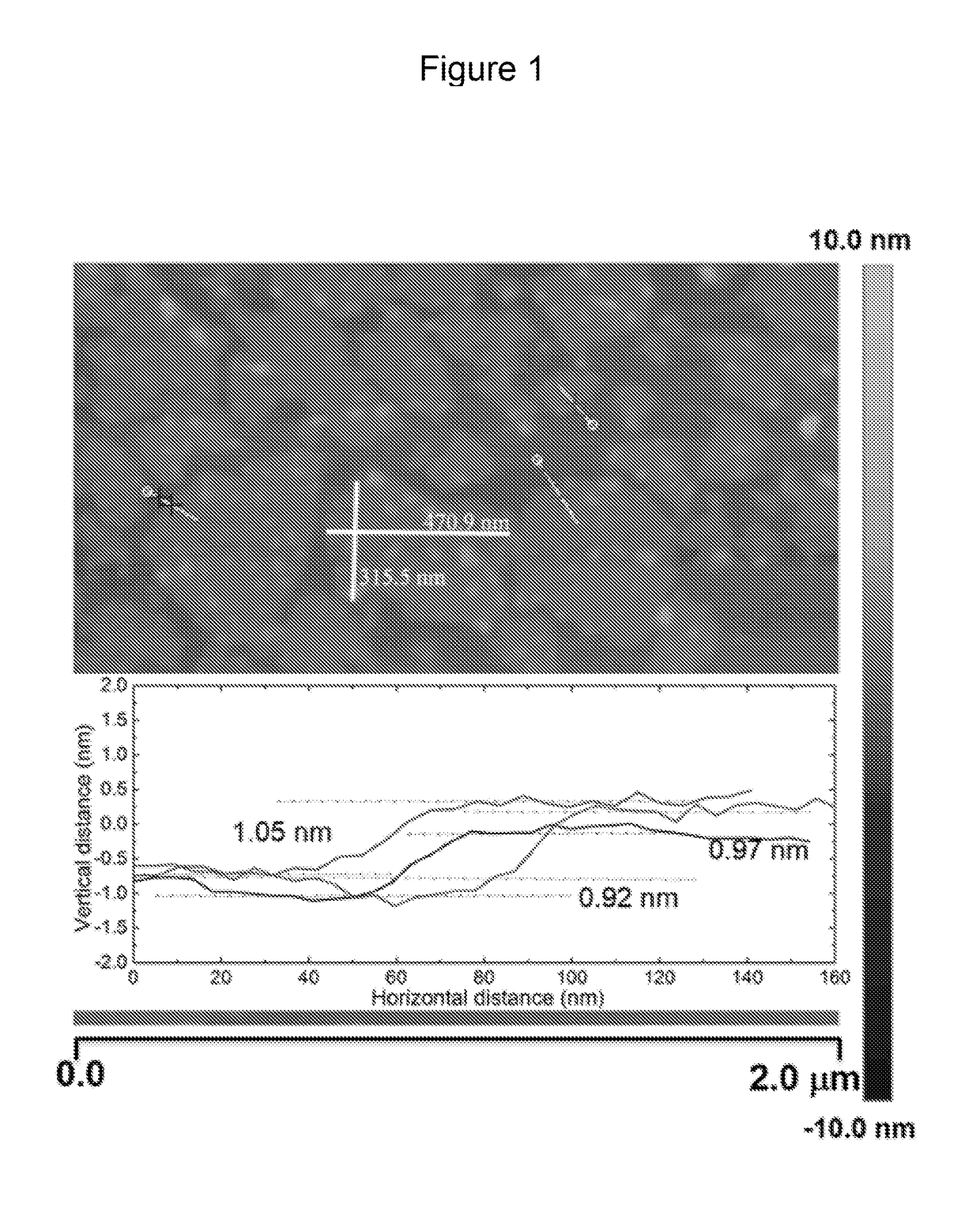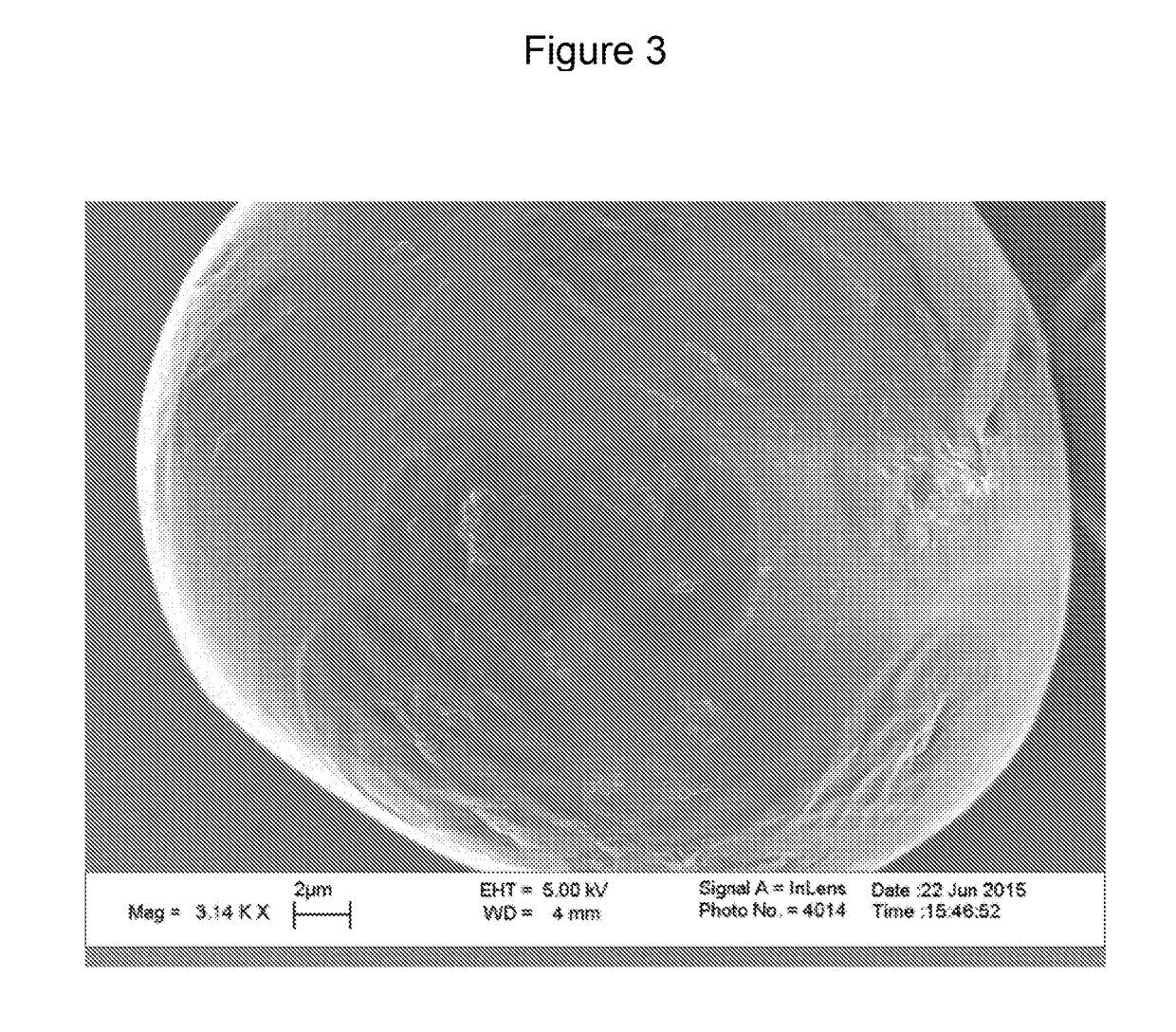Surfactant for enhanced oil recovery
- Summary
- Abstract
- Description
- Claims
- Application Information
AI Technical Summary
Benefits of technology
Problems solved by technology
Method used
Image
Examples
examples
[0040]3.0 g of graphite was ball milled for 1-100 hours. A 9:1 mixture of concentrated H2SO4 / H3PO4 (360:40 mL) was poured into the graphite, followed by adding 18.0 g of KMnO4. The reaction was then heated to 45° C. and stirred for 8-20 hours. The resulting mixture was diluted with 400 mL of deionized water in an ice bath. 3 mL of 35% H2O2 was then added under moderate mixing over 1-60 min. 1-20 g of NaCl was added to the mixture. After sedimentation for 5-300 min, the supernatant was decanted. This process was repeated until the pH value reached 5. Then the mixture was filtrated to collect the solids, which were dispersed in deionized water and ultra-sonicated for 0.5-5 hour to obtain single layer graphene oxide (GO).
Characterization
[0041]Atomic Force Microscopy (AFM; Veeco Dimensions 3000 Atomic Force Microscope) was employed to examine the morphology of GO. Measurement was conducted using silicon AFM probes (HQ:NSC15 / AL BS, Mikromasch) with a resonant f...
PUM
 Login to View More
Login to View More Abstract
Description
Claims
Application Information
 Login to View More
Login to View More - R&D
- Intellectual Property
- Life Sciences
- Materials
- Tech Scout
- Unparalleled Data Quality
- Higher Quality Content
- 60% Fewer Hallucinations
Browse by: Latest US Patents, China's latest patents, Technical Efficacy Thesaurus, Application Domain, Technology Topic, Popular Technical Reports.
© 2025 PatSnap. All rights reserved.Legal|Privacy policy|Modern Slavery Act Transparency Statement|Sitemap|About US| Contact US: help@patsnap.com



